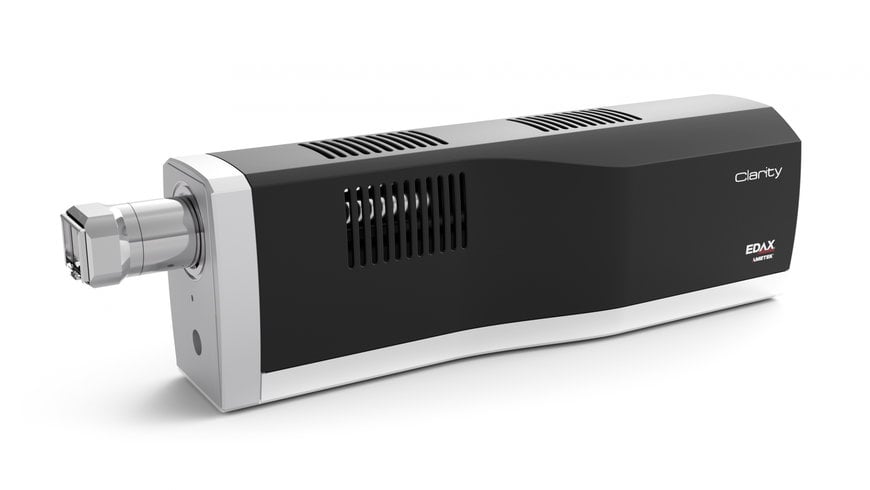www.industryemea.com
10
'22
Written on Modified on
EDAX Introduces the Clarity Super EBSD Analysis System
EDAX, LLC, a leader in X-ray microanalysis and electron diffraction instrumentation, has added the Clarity Super to its Electron Backscatter Diffraction (EBSD) product line. The Clarity EBSD Detector Series is the first commercially available direct detector system designed for EBSD applications. The series includes the original Clarity, now called the Clarity Plus, and the new Clarity Super.

By utilizing innovative new technology, both Clarity Detectors provide single-electron detection, zero noise, superior signal-to-noise, and high dynamic range performance. These revolutionary systems provide high-fidelity EBSD pattern quality and unparalleled sensitivity.
Both systems are optimized for high performance across a broad range of voltages, with an emphasis on efficient data collection down to a 7 kV beam energy. These conditions are used for analysis of ceramics and semiconductor materials where lower beam currents are required, or for applications like HR-EBSD, where superior EBSD pattern quality is required. The Clarity Super's sensor extends the energy sensitivity down to 3 kV beam energy while maintaining a high sensitivity. This performance is ideal for beam-sensitive samples and fine-grained materials where improved spatial resolution is required.
"We are very excited to announce the addition of the Clarity Super to our EBSD product line," says Matt Nowell, EBSD Product Manager. "Collecting EBSD data efficiently at lower voltages has been a target for the EBSD market for many years. By optimizing our direct detection sensor, customers can now acquire EBSD information at both lower beam energies and beam currents, which is ideal for beam-sensitive samples like perovskite organic-inorganic solar cells and ceramic materials. This detector enables our customers to collect previously unobtainable data."
Improved performance at lower voltages is beneficial for crystallographic characterization. It reduces the interaction volume of the incident electron beam within the sample and offers improved spatial resolution. This can extend the performance of EBSD down to nanometer-scale structures. Lower beam energies also reduce the charging effects when analyzing non-conductive or semi-conductive materials. Users will not have to use conductive coatings or low-vacuum mode to analyze these materials, producing higher quality EBSD patterns. Lower voltage operations also reduce specimen damage in beam-sensitive materials, facilitating operation that would not be possible at higher beam energies.
The Clarity EBSD Series Detectors remove the traditional phosphor and optics from the collection path, resulting in sharper EBSD patterns with higher sensitivity. Powered by this technology, Clarity is optimized for applications where traditional EBSD analytical conditions are not viable for quality results.
This new addition to the EDAX portfolio of EBSD detectors offers users a unique option for high-quality EBSD collection and mapping to resolve crystallographic microstructures and solve materials characterization challenges quickly and easily.
www.edax.com

